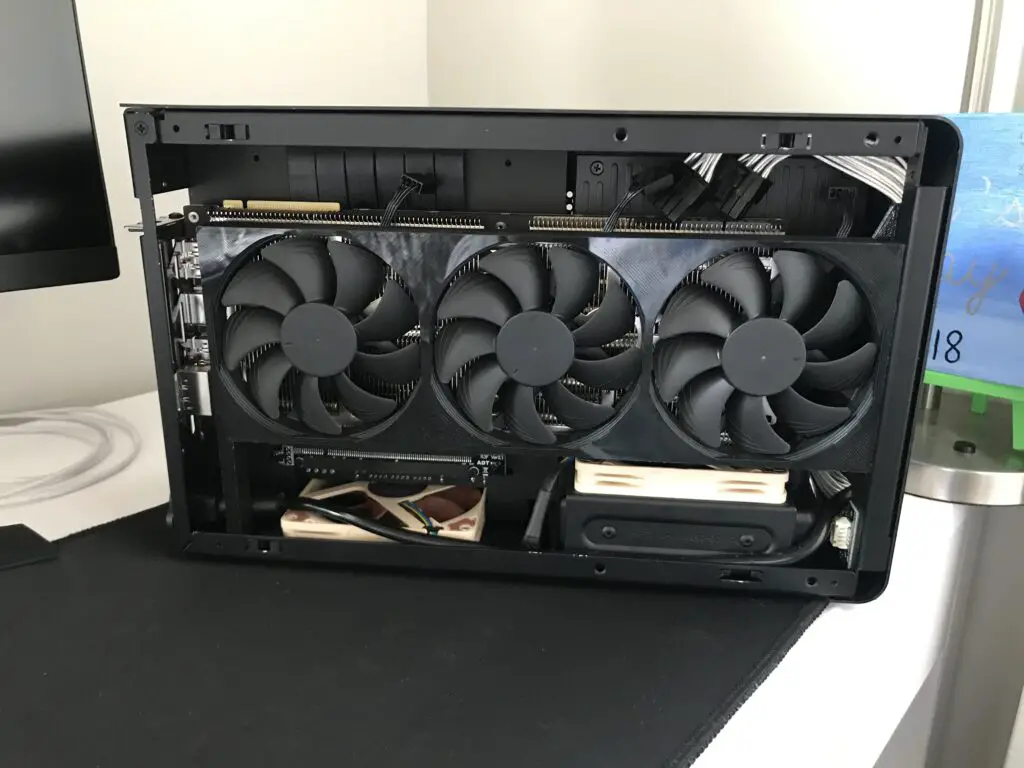TensorFlow is an end-to-end open-source platform for machine learning that’s very popular in the AI, machine, and deep learning community.
You can create large-scale neural networks with TensorFlow. If you are new to machine learning and TensorFlow.
One of the most asked questions is – can I run TensorFlow without GPU? The short answer is yes. But, that’s only in the beginning.
In this article, we explain why you may or may not need a GPU for running TensorFlow.
Does Tensorflow Need GPU?
No, Tensorflow doesn’t need GPU to run successfully. You can build and deploy machine learning models without requiring a graphics card.
However, the time taken to build and train these models is going to be significantly longer than when your PC has a graphics card.
GPUs greatly shorten the time for your machine learning models to be completed. Because of the added computational power it provides. The better the GPU the less time it takes to finish a model.
Can I Run Tensorflow Without CUDA?
Yes, you can run TensorFlow without CUDA. Tensorflow doesn’t necessarily require a GPU or CUDA to run.
Once you install all the necessary packages Tensorflow will startup. Keep in mind that, it will show warnings but that doesn’t stop it from running.
CUDA becomes absolutely necessary when you plan to train networks.
Can Tensorflow Run On Any GPU?
Yes, Tensorflow can run on any GPU. However, the better the GPU the faster networks and models are trained and completed respectively.
Clock speed, cores, and VRAM define how powerful the GPU is. The higher the values are in a GPU the better performance you will get out of it.
Take a look at the best GPUs for machine and deep learning. You will clearly see how they all have high clock speeds, cores, and VRAM.
Clock Speed
This metric is pretty straightforward and provided on the spec sheet. The higher the clock speed the more powerful the GPU.
However, clock speed is not the only determining factor in GPU performance.
For example, it is well known that the RTX 2060 is more powerful than the GTX 1650. But, when you take a look at their clock speeds (MHz).
They are almost similar. So clock speed shouldn’t be the only thing that you should use to gauge a GPU’s performance.
Cores
Just like how CPUs have their own cores. GPUs also have cores except that GPU cores are more numerous than CPU cores.
NVIDIA calls their cores NVIDIA CUDA cores whiles AMD refers to theirs as Stream processors.
The more cores a GPU has the better its performance.
VRAM
Just like how having a lot of RAM helps in system performance and multitasking. VRAM is RAM specifically used by the GPU.
That means the more VRAM a GPU has the more it can handle graphical loads.
Graphic cards with a high amount of VRAM are powerful cards. This speeds up the training duration of a network.
For example, the NVIDIA RTX Tesla V100 has 16GB VRAM and provides insane performance in AI, ML, and DL tasks.

Can I Do Machine Learning Without GPU?
Yes, but only in the beginning and if datasets are not large because the CPU can handle all the computations i.e., up to a certain point.
Once datasets and tasks become larger getting a GPU becomes paramount. A GPU adds computational power to your laptop or PC.
Plus, they are fantastic when it comes to computing complex data such as neural networks.
And their numerous cores (thousands) compared to 2-32 cores in CPUs complete several tasks at once making them faster than CPUs for neural network training.
Can I Install Both Tensorflow And Tensorflow GPU?
Tensorflow and Tensorflow GPU used to be installed separately.
That’s not the case anymore because Tensorflow 2.0 or higher comes as a single package – Tensorflow and Tensorflow GPU. The Tensorflow GPU requires NVIDIA GPU drivers for support.
